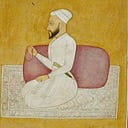Below is a simplified genetic breakdown of major Pakistani populations using modified Gedmatch-Harappa data. There are similar figures floating around online, but they tend to suffer from a couple of issues. Specifically, inadequate sampling of different Pakistani ethnicities, and lack of comparison with neighboring populations. Hopefully my figure improves on both these fronts.
Note that multiple components are combined to arrive at each of the four major ancestral categories depicted on this map. I thought about using more than four, but was afraid it would overly clutter the display, so I kept it simple.
Notes:
- Most of the West Asian ancestry in Pakistan (and South Asia generally) is related to the ancient Iranian Hunter Gatherers, who were instrumental in pioneering the Indus Valley Civilization.
- The European related ancestry in the Muhajir Syed of Karachi is a bit different than surrounding populations, as it has a large Mediterranean component rather than the Northeast Euro component more typically seen in South Asians. This indicates significant admixture from Middle-Eastern populations, likely during the Islamic Period.
- The Kurram and Kabul Pashtuns aren’t that different from some Punjabi and Dardic populations, but the Waziri, Kandahar, and especially Herat Pashtuns are. This likely has to do with the distance from the Indus Valley lowlands and Khyber Pass, which served as historic conduits between Punjab and Afghanistan.
- Indian Jats have a lot of European admixture, likely from two separate waves of migration into India. The first being the famous Indo-Aryans, the second likely a related group (possibly Scythian). Also interesting to note there’s a decrease in this admixture as one moves west. This could be due to the breakdown of caste endogamy as one moves first into Sikh and then Muslim Punjab. Or, its related to the increasing distance from the area of ancient Aryan/Scythian settlement around Haryana. Maybe both. Or neither.
- Most Gujaratis and Rajasthanis appear genetically distinct from their neighbors in eastern Pakistan and Indian Punjab region. The exceptions being Rajasthani Jats (who are migrants from Punjab-Haryana), and Gujarati Lohana (who are either Sindh migrants or from the related Kutch region).
- Hazaras look like Mongols who got lost and ended up in Afghanistan, which they probably are. Also, the Dardic peoples seem to cover quite the genetic spectrum, from Kashmiris to the Chitrali Kho. And lastly, the Balochis, Makranis, and Brahuis seem to be forming their own genetic grouping.
Next I’ll probably post a PCA chart of the region, to really see where these populations cluster in relation to each other.
